Related Research Articles

Marie-Joseph Paul Yves Roch Gilbert du Motier de La Fayette, Marquis de La Fayette, known in the United States as Lafayette, was a French aristocrat, freemason, and military officer who volunteered to join the Continental Army, led by General George Washington, in the American Revolutionary War. Lafayette was ultimately permitted to command Continental Army troops in the decisive siege of Yorktown in 1781, the Revolutionary War's final major battle that secured American independence. After returning to France, Lafayette became a key figure in the French Revolution of 1789 and the July Revolution of 1830 and continues to be celebrated as a hero in both France and the United States.

Charles Willson Peale was an American painter, soldier, scientist, inventor, politician, and naturalist.

Mary Ludwig Hays was a woman who fought in the American War of Independence at the Battle of Monmouth. The woman behind the Molly Pitcher story is most often identified as Hays, but it is likely that the legend is an amalgam of more than one woman seen on the battlefield that day.
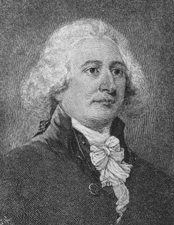
John Brown was an American lawyer and statesman who participated in the development and formation of the State of Kentucky after the American Revolutionary War.
Lafayette Hill is an unincorporated community, which is situated primarily within Whitemarsh Township, Montgomery County, Pennsylvania. A small part of this community is also located in Springfield Township.
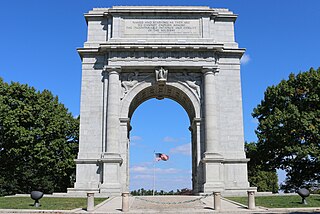
Valley Forge National Historical Park is the site of the third winter encampment of the Continental Army during the American Revolutionary War from December 19, 1777 to June 19, 1778. The National Park Service preserves the site and interprets the history of the Valley Forge encampment. The park contains historical buildings, recreated encampment structures, memorials, museums, and recreation facilities.

The 1st Rhode Island Regiment was a regiment in the Continental Army raised in Rhode Island during the American Revolutionary War (1775–83). It was one of the few units in the Continental Army to serve through the entire war, from the siege of Boston to the disbanding of the Continental Army on November 3, 1783.
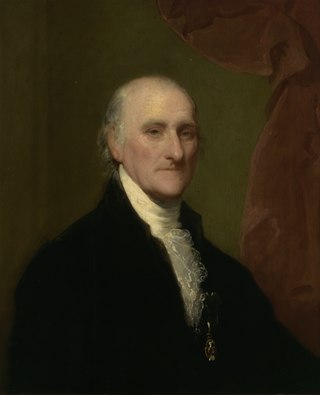
Samuel Miles was an American military officer and politician, as well as an influential businessman and politician, active in Pennsylvania before, during, and after the American Revolutionary War.
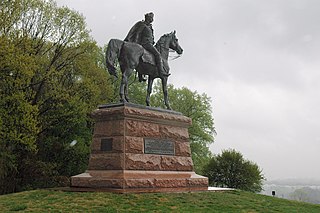
The Philadelphia campaign (1777–1778) was a British effort in the American Revolutionary War to gain control of Philadelphia, the Revolutionary-era capital where the Second Continental Congress convened and signed the Declaration of Independence, which formalized and escalated the war.

Pennsylvania was the site of many key events associated with the American Revolution and American Revolutionary War. The city of Philadelphia, then capital of the Thirteen Colonies and the largest city in the colonies, was a gathering place for the Founding Fathers who discussed, debated, developed, and ultimately implemented many of the acts, including signing the Declaration of Independence, that inspired and launched the revolution and the quest for independence from the British Empire.
The Battle of Barren Hill was a minor engagement during the American Revolution. On May 20, 1778, a British Army force attempted to encircle a smaller Continental Army force then under the command of Marquis de Lafayette. The maneuver failed, and the Continental Army escaped the trap but the British took the field.
Isaac Wayne was an American politician from Pennsylvania who served as a Federalist Party member of the U.S. House of Representatives for Pennsylvania's 4th congressional district from 1823 to 1825. He previously served as a member of the Pennsylvania House of Representatives from 1799 to 1801 and in 1806, and served as a member of the Pennsylvania State Senate from 1807 to 1810.

Jehu Eyre or Ayer was an American businessman, veteran of the French and Indian War and American Revolutionary War, and member of the influential Eyre family, which played a major role in the American Revolution and the early Republic. Jehu's father George had emigrated to the New World in 1727; the family was descended from one of the oldest noble lines in England.

Valley Forge functioned as the third of eight winter encampments for the Continental Army's main body, commanded by General George Washington, during the American Revolutionary War.

Eden Cemetery is a historic African-American cemetery located in Collingdale, Pennsylvania. It was established June 20, 1902, and is the oldest existing black owned cemetery in the United States. The cemetery covers about 53 acres and contains approximately 93,000 burials.
Curtis Grubb (c.1730—1789), Patriot and oldest son of Peter and Martha Bates Grubb, was a second-generation member of the Grubb Family Iron Dynasty along with his younger brother Peter Jr. The brothers operated the Cornwall Ironworks, making significant contributions to the American Revolutionary War effort, and Curtis served several terms in the Pennsylvania Provincial Assembly. He was also one of the largest enslavers in Pennsylvania at the time of independence, registering twenty-five people as his property in 1780 in accordance with state gradual abolition law.

General George Washington used a pair of campaign tents throughout much of the American Revolutionary War. In warm weather, he used one for dining with his officers and aides, and the other as his military office and sleeping quarters. Canvas panels and poles from both tents survive, and are currently owned by four separate historical organizations.
W. Herbert Burk (1867-1933) was an Episcopal priest and founding vicar of the Washington Memorial Chapel in the Valley Forge National Historical Park. He is known for assembling, over the course of many years, the collection of Revolutionary War artifacts that form the core of the collection of the Museum of the American Revolution in Philadelphia, and for his work to preserve Valley Forge, the site of an important Revolutionary War army encampment.
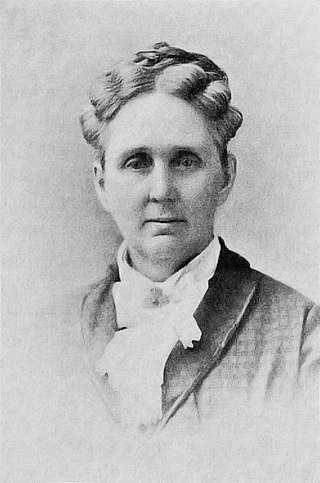
Anna Morris Holstein was an American organizational leader, civil war nurse, and author. From 1862 until the close of the war, Holstein was engaged in the hospital service, and after the Battle of Gettysburg, she was matron-in-chief of a hospital in which 3,000 seriously wounded men were looked after. She was the founder and first regent of the Centennial and Memorial Association of Valley Forge, and a regent of the Valley Forge Chapter, Daughters of the American Revolution (D.A.R.). It was largely through her influence that George Washington's headquarters at Valley Forge were purchased, restored and made accessible to the people. Her publications included Three years in field hospitals of the Army of the Potomac (1867), Swedish Holsteins in America from 1644 to 1892 (1892), and Valley Forge : Winter of 177-78 The Darkest Period of the Revolution.
Margaret Thomas also known as Margaret Thomas Lee was a free Black woman and domestic worker who was employed by George Washington.
References
- 1 2 3 4 5 "Hannah Till (U.S. National Park Service)". www.nps.gov. Retrieved 2022-04-05.
- 1 2 "Nineteenth-Century Remembrances of Black Revolutionary Veterans: Hannah Till, George Washington's Cook". Journal of the American Revolution. 2021-02-02. Retrieved 2022-04-05.
- 1 2 3 Holmes, Kristin E. (October 6, 2015). "Revolutionary slave an afterthought no more". Philadelphia Inquirer .
- ↑ Nolan, J. Bennett (1934). "Lafayette and the American Philosophical Society". Proceedings of the American Philosophical Society. 73 (2): 117–126. ISSN 0003-049X. JSTOR 984760.